|
The Project
 Research Methods Research Methods
 Research Questions Research Questions
The Locations
How to Use This Site
Links
August 17 - September 10, 2005
The Team
Daily Journal
New Horizon Daily Report
New Horizon Cruise Track
Contact Us

|
The Team
Kelly Benoit-Bird, Assistant Professor 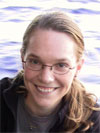
Oregon State University, Corvallis, Oregon
Kelly Benoit-Bird is an assistant professor at Oregon State University. She wants to know where animals in the ocean live. This helps her understand how the animals are able to find food while avoiding becoming dinner for other animals. In the ocean, however, you can't see beneath the surface. Everything happens over a vast three-dimensional space and things change quickly. Kelly uses acoustics, or sound, to observe animals from a distance. By bouncing sounds off animals, much like a fish-finder on a fishing boat does, she looks at how animals are patterned in space.
She looks at these patterns over a period of time to understand how animals interact
with each other. During this cruise, Kelly has four sonar devices on the
seafloor. For six weeks, these instruments will continuously record the presence of fish. Aboard
the ship, Kelly is using five acoustic instruments at the same time to look at the distribution of fish and zooplankton. This will help her understand the predator-prey dynamics in this ecosystem.
Kelly has other field projects in Hawaii, New Zealand, the Gulf of Mexico, the Mid-Atlantic bight, the Oregon coast, and the Netherlands. When not working, she enjoys painting, drawing, tap dancing, and working with her husband on their first house.
Amanda Briggs-Whitmire, Graduate Student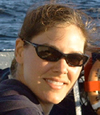
Oregon State University, Corvallis, Oregon
Amanda Whitmire-Briggs is a graduate student in biological oceanography. She uses optical methods to identify and monitor phytoplankton distributions in the coastal ocean. She is interested in understanding how individual phytoplankton groups (like diatoms and dinoflagellates) contribute to ocean color. Amanda has been measuring the optical properties of phytoplankton cultures in the laboratory. The goal of her research is to determine which qualities of phytoplankton cells (size, shape, pigments) determine their optical properties. Then she can use that knowledge to identify dominant phytoplankton types in specific places in the ocean. When Amanda is not working, she enjoys gardening, knitting, quilting, hiking, camping, playing volleyball, and blogging.
Brian Concannon, Electrical Engineer 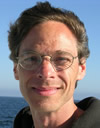
When Brian was growing up, he liked to take things apart to see what was inside and how they worked. So, engineering was an easy career choice for him. While he was in college, Brian interned at a Navy research lab where scientists used lasers to detect and map objects underwater. That was 20 years ago, and Brian still loves his job at the Navy lab. He feels very fortunate that he found what he loves to do so early in life. He is surrounded at work by dedicated, intelligent people who have great senses of humor.
At the end of the day, Brian leaves work at work to go home and play with his daughter and wife. Before his daughter Sophie was born, Brian and his wife would travel to faraway places and stay as long as they could. Now Brian says, "Sophie likes to fly on airplanes. I hope she likes curry chicken for breakfast."
Tim Cowles, Professor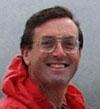
Oregon State University, Corvallis, Oregon
Tim Cowles is a professor of biological oceanography at Oregon State
University. He studies phytoplankton and zooplankton living in the upper part of the ocean. These two groups of small organisms form the base of the marine food web. Tim is particularly interested in learning how these plankton form dense aggregations (or patches). He wants to know how long these patches of plankton can keep their shape when the upper ocean currents change speed and direction.
Tim's research group uses several different types of underwater instruments to detect the amount of phytoplankton and zooplankton in the water. By using these instruments over a broad area, it is possible to determine the size of the patches or layers of plankton. Tim has been studying plankton since the mid-1970s. He has done research in the North Atlantic, the South Pacific, the North Pacific, and the Southern Ocean.
In his spare time, Tim enjoys walking and kayaking with his wife Susan, listening to jazz, reading, and playing GO (he claims it is the best game in the world!).
Russell Desiderio, Research Associate
Oregon State University, Corvallis, Oregon
Russ Desiderio thinks of himself as a spectroscopist (one who studies the interaction of light with matter) who pretends to be an oceanographer. He applies his knowledge of light and matter to oceanographic research problems. He has been involved in the design and testing of oceanographic optical instruments. These instruments are placed in the ocean to make measurements of the amounts of plankton in the water. This helps the research group learn where these small plants and animals can be found in the ocean. Besides general cruise preparation, Russ’ duties include maintaining the instruments. He “trouble-shoots” the problems that arise during the instrument deployment (release into the ocean). Russ also processes and interprets the data that comes to the ship from these instruments.
When not working, Russ can often be found at the Oregon State pools, swimming and playing/coaching water polo. He also enjoys sailboarding, bodysurfing, listening to piano jazz and blues, reading mysteries, and baking and eating Italian baguettes.
Andrea Drzewianowski, Graduate Student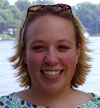
University of Maine, Orono, Maine
Andrea has just started working on her Master’s Degree in oceanography at the University of Maine. Andrea’s graduate work will be the study of phytoplankton. She will study the thin layers of phytoplankton in the ocean. Andrea has been interested in phytoplankton for several years. She has always been fascinated by their diversity and their roles in the world’s many ecosystems.
In May 2003, Andrea received her undergraduate degree with honors in biology from Goucher College in Baltimore Maryland. After college, she worked for almost two years in the research development group for Martek Biosciences. This is a biotechnology company that makes products from micro-algae. When not in the lab or in the field, Andrea can be found reading, cooking, or horseback riding.
Jim Eckman, Program Officer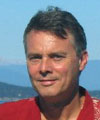
Office of Naval Research, Arlington, Virginia
Jim Eckman manages the biological oceanography program for the Office of
Naval Research (ONR). This is one of the federal agencies supporting basic research
in marine sciences. Jim promoted the LOCO research program to the ONR
management and acquired the funds to support the science. He remains
interested and involved in the progress of the research. Jim came to
ONR after enjoying 13 years as a member of the faculty at Skidaway
Institute of Oceanography in Savannah, Georgia. Jim remains involved in
basic research. His interests focus on impacts of waves, currents and
sediment transport on animals and plants that inhabit the seafloor.
When not working, Jim exercises, enjoys the outdoors, the blues, and
baseball. He also maintains a home and helps raise a 14-year old son.
Emily Kallin, Research Associate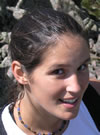
University of Maine, Orono, Maine
Emily is a research associate in a phytoplankton and optics lab at the
University of Maine. She manages the lab and she supervises graduate students and interns. She also maintains the lab instruments. Emily monitors the amount of phytoplankton in the Damariscotta River. She also does research on how plankton can affect the pH (acidity or alkalinity) of sea water.
Emily studied biochemistry at Tufts University in Medford, MA. After graduation, she took a year off to hike the Appalachian Trail before coming to this lab. When not working, Emily enjoys spending time with her son, backpacking, and playing Ultimate Frisbee.
Jennifer Prentice, Oceanographer
Jennifer did not set out to be an oceanographer, but she grew up by the sea in New England and has a love for water. Jennifer says, "The benefits of being an oceanographer include working outside in the environment as well as in the laboratory, approaching scientific problems from a broad knowledge base, traveling to interesting places, and meeting and working with interesting people."
Jennifer has studied microbes in drinking water, large seagrass ecosystems, zooplankton in the Sargasso Sea, bacteria and phytoplankton in estuaries and the open ocean, the magnetic properties of ocean cores, and trace metal and nutrient chemistry of marine water. Now she is studying light and how it affects phytoplankton growth. She measures how light is absorbed and scattered in the ocean. She is interested in gathering information by measuring the different properties of light in the ocean.
Jennifer has many interests outside work. She loves literature, year round outdoor sporting activities, of course swimming in the ocean and diving in warm climates, cooking, art, and music. Most of all, she enjoys all of the different people she meets. She enjoys knowing how we live our lives on this blue planet.
Ida Royer, Graduate Student
Oregon State University, Corvallis, Oregon
Ida has just completed her master's degree in chemical oceanography. She is on this cruise to help out Dr. Cowles and his group. Ida's studies were on the biochemical make-up of Emiliania huxleyi, a marine phytoplankton. Ida analyzed the amino acid content of this microscopic plant. Other people have collected this plant from different parts of the ocean, and Ida grew them in the lab at Oregon State. She was interested in seeing if/how the plants differ from each other when they become stressed by a lack of light. (see the Special Report “Is it Hot or Cold in the Sea of Cortez?” http://literacyworks.org/ocean/report-askaplant/project.html . Ida wrote the online journal articles from the ship during that cruise).
Ida loves new experiences, large dogs, flying her kite at the beach, people with strange habits, and strawberries.
Kathleen Salinas, Instructor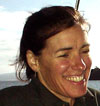
Rogue Community College, Grants Pass, Oregon
Kathleen teaches adult basic education and general education at Rogue Community College in Grants Pass, Oregon. She also teaches science as a volunteer at the local elementary and middle schools. Kathleen says, “The best part about teaching is getting excited about learning along with the students. I am thrilled to show people how things work, what new discoveries have been made, and how this all relates to their own life.”
Kathleen has worked this past year with a team of adult education teachers who are all learning about the ocean. As she says, “I get to teach my students all that I have learned about the ocean. The ocean is a fascinating and valuable resource for learning and teaching many aspects of science, reading and math.”
Kathleen enjoys working outdoors as much as possible. On weekends and holidays she spends many hours as a volunteer for Crater Lake National Park. She also works alongside her husband, who works to monitor lake and water resources. She enjoys spending time with her three children as well as growing her own fruits and vegetables on the family farm.
Kurt Schultz: Graduate Student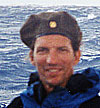
Oregon State University, Corvallis, Oregon
Kurt Schultz is a graduate student in the Marine Resource Management Program at Oregon State University. He is interested in the control and management of aquatic invasive species. He is especially interested in those aquatic invaders who were introduced to estuaries from ballast and bilge waters. This water is released from both commercial and recreational vessels. Kurt is also interested in fisheries management. This includes studying the recovery of fish species whose numbers have fallen. Kurt has a degree in aquatic biology. He worked for several years on water quality and hazardous waste management studies, working for both the City of Austin, Texas and the Texas Natural Resource Conservation Commission.
In 1999, Kurt decided to change to a different career path and ran away to sea. He spent two years as a professional sailor, sailing mostly aboard traditional “tall ships” on the East Coast and in the Caribbean. He planned to obtain his Master Mariner’s (Captain’s) license, but following a sailing-career ending injury, Kurt decided to apply to graduate school. He is following his dream of working in a marine science related career. In his spare time, Kurt fixes up an old sailboat, plays a little soccer, surfs occasionally, reads, and enjoys live music and the great outdoors!
Chad Waluk, Faculty Research Assistant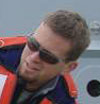
Oregon State University, Corvallis, Oregon
Chad Waluk is a research assistant for several professors at Oregon State University. He originally came to OSU to work as a technician for an Autonomous Underwater Vehicle (a small unmanned submarine). He says he is now a ‘jack of all trades’, because he works on many different projects. His work includes operating several data gathering instruments (ones that analyze temperature, conductivity, depth, water currents, chlorophyll presence, optical properties of water…), working at sea and/or in a lab setting, having a knowledge of many aspects of mechanical and electrical work, and working with a variety of computer software and hardware. Chad’s oceanographic interests are in many different areas. He enjoys being a part all aspects of ocean research, and this is the perfect job for that. His job also allows him to participate in a fair amount of travel. So far, Chad’s trips have taken him to Alaska, Hawaii, several ports all along the US West Coast, and the North Pole. Possible future trips may include Norway, Chile, the Equatorial Pacific Ocean, and more Arctic Ocean trips.
When not working, Chad enjoys the many outdoor wonders that the Pacific Northwest has to offer. These include hiking, camping, snow boarding, SCUBA diving, and anything new that someone may want him to try. He also escapes thoughts of work with his favorite sci-fi or comedy television shows. Chad says, “One is never too old for good quality cartoon humor.”
Christopher Wingard, Senior Research Assistant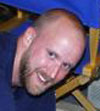
Oregon State University, Corvallis, Oregon
Christopher Wingard is a Senior Research Assistant in the Plankton/Bio-Optical
Oceanography group. He has a Master's Degree in Microbial Ecology and Evolution from the University of Oregon. Christopher’s job includes all aspects of the lab’s work. He prepares for the research cruises, he works on data collection, and he analyzes the data once it has been collected. He also interprets the data and presents it in ways that people can understand. Christopher maintains the scientific instruments and the computers. He puts together different “packages” of instruments, depending upon the purpose of the scientific project. When at sea, he deploys (puts into the ocean) these “packages” of instruments. He also “troubleshoots” any instrument or computer software problems.
When not working, Christopher likes to spend his time with his friends and family. He also enjoys reading, exercising and building and growing things around the house.

|















